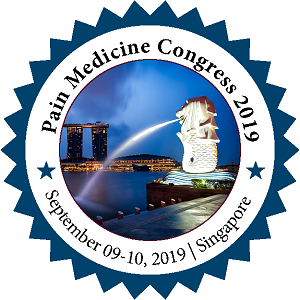Ashutosh Joshi
Khoo Teck Puat Hospital, Singapore
Title: What works and what does not? Interventional treatments for neuropathic pain
Biography
Biography: Ashutosh Joshi
Abstract
Neuropathic pain is a very common component of a wide range of pain states,usually resulting from neural damage,including acute and chronic post-operative pain and pain secondary to advanced malignancy. It is a complex condition. Which often has profound negative physical, psychological and social impacts. Management is universally acknowledged asextremely challenging and there is a lack of clear and specific treatment guidelines. The principal aim is to improve the patient’s quality of life by attaining pain relief whilst minimising adverse drug effects and improving physical function. The three broad categories of pain management include medications, interventional therapies, and physical or psychosocial therapies. Research indicates on average, only half of patients treated with any one modality achieve a clinically significant reduction in pain, and this is not always accompanied by improvement in function. Integrating a combination of treatment modalities is recommended. Many of the drugs used to treat neuropathic pain, including tricyclic antidepressants, gabapentin, pregabalin, duloxetine and opioids are associated with adverse effects that patients find burdensome. These include somnolence, dizziness, motor imbalance and cognitive impairment. These adverse effects may significantly restrict the patient’s independent living activities, increasing the risk of falls, limiting the ability to drive a car or be actively involved in daily living. Patients who do not show adequate response to medications may benefit from interventional treatments such as nerve blocks, modulation of specific neural structures and intravenous ketamine infusions. Spinal cord stimulation is ideal for patients not responding to other treatments, as it was shown to be relatively safe, reversible, cost-effective, and long-lasting (with results lasting a minimum of 24 months in several studies). The presentation is about interventional treatment algorithm of neuropathic pain and current evidence regarding use of perineural/ sympathetic plexus injections, intravenous ketamine infusion and spinal cord stimulator.

